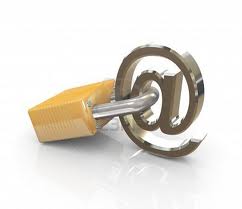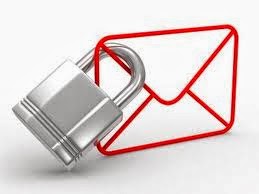· Guard Yourself against Phishing.
·
Change your password on regular basis as per
the password policy.
·
Do not share your password with anyone.
· Always remember to sign out properly after
using your mail account.
·
Do not save or remember your password anywhere.
·
Use Anti-Virus software & update it on
regular basis.
·
Update the operating system and application
patches.
·
Use automatic reply only when needed.
·
Never open / respond any mail / attachment from
unknown sender.
·
Never subscribe your email ID on unsafe
locations (over internet).
1. Guard yourself against Phishing
Common
email scams employ email messages and even websites that look official, but are
in fact attempts to steal your identity to commit fraud. This is the activity
commonly known as ‘Phishing’.
Make
sure that the address in your browser is genuine and does belong to the website
you need to access. Don't ever copy URLs from e-mails. Type out the URL in a
new window.
Never
click on a link within an email requesting that you enter your username,
password, etc. The link can also be malicious.
Do not open any 'fishy' emails. Delete immediately. Emails that have
misspellings, poor graphics, or include a long cc list of other email addresses
can be suspicious.
Install
a web reputation filter on your desktop that alerts users to phishing websites.
Make sure that you have unique username and passwords for each account/website
you regularly visit.
Never
give out sensitive personal or account information to someone that asks via
email unless you have verified the message's authenticity.
2. Change your password on regular basis as per the password
policy.
It
is recommended to change passwords on a regular basis .
3. Do not share your password with anyone.
Don't share your password. Do not be duped by malicious e-mails asking you for
your password. This is a well-known, trick designed to fool you into sharing
your password. As a rule, never share it with anyone.
4. Always remember to sign out properly after using your mail
account.
Always
log out of your email when finished, whether you are using web mail or POP
mail. It is also recommended to log out whenever you have to leave your
computer unattended for a considerable period of time.
5. Do not save or remember your password anywhere.
Do not “save / remember” your password anywhere (say your browser, POP Client).
6. Use Anti-Virus software & update it on regular basis.
It
is also highly recommended to install and maintain a anti-virus software on
your computer to prevent infection from USB drives, CDs or DVDs and so on. Make
sure it is updated regularly. Scan all attachments with a virus program before
downloading/executing any, even if they come from someone you know.
Computers that are infected with spyware/key loggers record every word that
users are typing, hence a daily scan is recommended.
7. Update the operating system and application patches
Users
need to ensure that their desktop/laptop has the latest operating system and
application patches. If the patch levels are not updated, updated anti-virus
software will not be able to prevent an infection. Both anti-virus and
operating system patches need to work together.
8. Use automatic reply only when needed.
It is savvy to turn off any automatic replies in your email client saying that
an email has been read or received, because this confirms that the email
address is a good one. Spammers will then target your email as a priority and
flood your inbox with even more unnecessary and potentially harmful mails.
9. Never open / respond any mail / attachment from unknown
sender.
If
it happens that a few spam mails do manage to sneak through, make it a must to
delete all them. Replying / Opening such emails / attachments typically only
informs the sender that they have found an active email address to send more
spam emails or They may contain what are known as "letterbombs" or
"viruses," which can damage your PC.
10. Never subscribe your email ID on unsafe locations (over
internet).
Never
subscribe your email address on any unsafe / fake website, they may try to
flood your inbox or spammers will try to send bulk spam mails (which may
contain virus).











